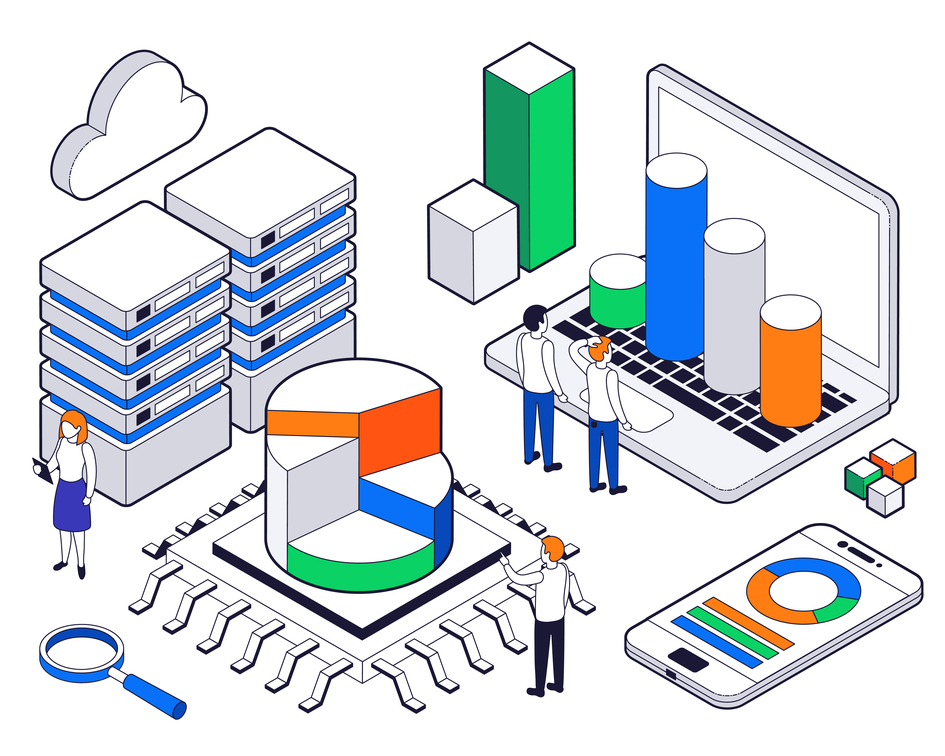A Stitch in time saves lives and dimes
Big data can help you reduce costs, be more efficient and save more lives while making the care more affordable for your patients. Leveraging it can provide you an edge over your peers. The adoption of big data in healthcare needs to be quicker than in other sectors such as media, financial services, and manufacturing. Now is the time to take action as the worldwide healthcare big data industry is expected to increase gradually at a compound annual growth rate (CAGR) of 22.07 percent to reach roughly $34 billion by 2022.
What is Big data in healthcare and how can it help you?
Big data is a field that deals with methods for analyzing, systematically extracting information from, or otherwise working with data sets that are too large or complex for traditional data-processing application software to handle. Big data in healthcare refers to the vast volumes of data generated by the adoption of digital technology that collects patient records and aid in the management of hospital performance, which would otherwise be too large and complex for traditional technologies.
The three key concepts on which big data analysis is primarily based are : volume, variety, and velocity. They are the defining dimensions in the healthcare sector as well.
- Volume refers to the enormous amount of data generated by healthcare organizations via their applications, portals, websites, and EHRs.
- Velocity is the rate at which datasets are created and processed.
- Variety entails the various sorts of data that organizations currently produce, acquire, and evaluat
Now that we know what big data is and what it entails in healthcare, let’s discuss how big data analysis can help you.
Tracking and preventing care
Big data in healthcare starts even before a patient reaches a doctor's office. Tracking and identifying diseases long before they happen can boost preventive care. Companies like Apple and Fitbit help by gathering data like activity, sleep, blood pressure, and more through their wearable products. If the healthcare providers have access to those sets of data, they can gain a broader understanding of the health of their patients and plan for their prevention from deadly diseases, which will lead to far better medical results.
Reducing errors
Nearly 10% of the total health care expenditure is wasted because of human error or fraud, and errors in prescription dosage can result in overdosing, risking a patient’s health and overall well-being. Big data can combat this disturbing trend by catching errors before they occur and save money, reputations, and most importantly, lives.
Providing high-risk patient care
Big data can help identify both high-risk and high-cost patients. Health insurers are now looking at a patient's gender, age, prescription drug usage, and spending history to predict whether or not they are high-cost. It can help reduce costs for payers, and patients can get started with care well ahead of time.
But what is small data, and why is that important?
Big data vs Small data in healthcare
Insofar, we have discussed Big data in healthcare and its benefits, but what’s small data in healthcare? Do we need to focus on big data vs small data or make use of both?
Both.
Big data, as we understand, are large sets of data that can prove insightful once analyzed, while small data has a lower volume and is available in a manner that is more accessible, informative, and actionable. Small data is available in “usable chunks” and connects people with timely, meaningful insights that are organized and packaged -- often visually -- to be accessible, understandable, and actionable for daily tasks.” For example, different sets of patients can be grouped into distinct categories based on their attributes, such as data set A with low sugar and high BP and data set B with high BP and low sugar for analyzing their health further.
You can use small and big data in amalgamation for better results. Measure small and then expand your focus. For example, if you are looking for cost savings, narrow your focus to review trends monthly, in real-time, and then analyze the last 12 months of spend. Break the data down into smaller chunks and then build it up. To understand your purchased services spend and uncover hidden cost-saving opportunities, you must be able to see the line item details –- the small data –- in your invoices.
Collective vs Individual
Let’s simulate a simple medical research. You have 30 patients in your care. For the next 30 days, you are going to track their weight, blood glucose, and body fat. To achieve your goals, you have asked your patients to wear a fitness tracker all the time. What kinds of data would you be collecting?
Small data obtained from a singular fitness tracker will provide you great insights into an individual. Big data, on the other hand, would be the collective data of your group of patients. Although it may sound simple, the challenge is to connect small data to big data, to improve individual healthcare, even as solutions are uncovered which can have a far greater impact on a larger target group.
We hope we have helped you understand big data, small data, and their impacts on the healthcare sector. Share this blog with someone you think might find it helpful, and if you want to continue the conversation, join our community of over 540000 healthcare professionals from around the globe here — My Medical Panel











